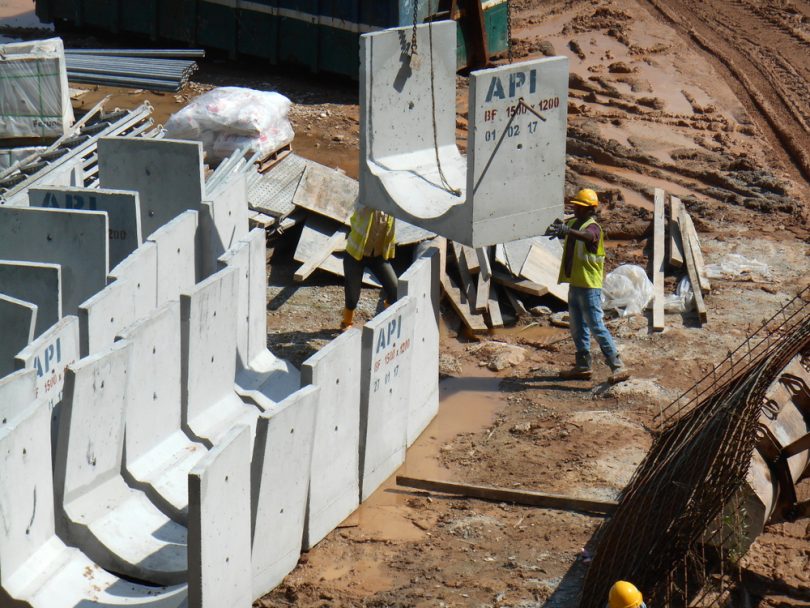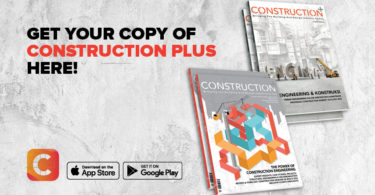Conventional ways of installing box culverts often necessitate road closing, which means smaller work windows and longer time to complete the project. An alternative to this is to use a method that can eliminate the disruption to traffic by moving all works underground.
In BuildTech Asia’s Digital Series, Quek & Quek Civil Engineering presented its ‘Pull and Rail’ method that has been applied in the drain upgrade and road expansion project across Changi Airport Boulevard. Without full lane closures, traffic going in and out of Changi Airport was only mildly impacted. This innovative way has also saved almost 38 per cent of total man-hours and an estimated 28 per cent less asphalt used compared with conventional methods.
The project received a Silver Award from the 2019 SCAL Productivity and Innovation Awards. It involved only a temporary and partial closure within a stipulated timeframe to pre-install the temporary decking, which was designed robustly to carry heavy vehicular loads, as well as withstanding the lateral earth pressure during the mining and excavation procedures. With this decking, the installation of the precast box culverts was completed by sliding them underneath the boulevard; hence, no road closure was needed.
THE CONVENTIONAL METHOD
The installation of a box culvert drain across the airport boulevard would affect the main road towards terminals 1 to 3. Using the conventional, open-cut method would pose a few problems. First, the upper part of the box culvert was higher than the existing road level. Second, the sequence of works would be labour-intensive and time consuming.
The works would begin with the installation of temporary decking that raises the road level. Due to the permittable road opening and closing schedule, resuming works means that the temporary decking needs to be removed. This would allow for excavation so that the lower part of the box culvert could be inserted (followed by the upper part). Then, the decking system needs to be put back to open lane for traffic again, which would also involve laying a premix over the decking. To proceed with the backfilling work, the premix must be removed again and the decking reopened.
These works are unnecessarily repetitive. Lane opening and closing would have to be maintained until the whole project is completed, which means a series of removing and reinstalling back premix and decking. The permissible lane closure timing is 10 hours per day, from 10 a.m. to 4 p.m. for day works and from 1 a.m. to 5 a.m. for night works. The site work would also be subjected to frequent airport emergency drills, which necessitates removal of all machinery and reinstatement for traffic within 30 minutes. In addition to this, the drain alignment was not perpendicular to the road so the precast box culverts would clash with other lanes. Meanwhile, the maximum number of lanes allowed for closure at the same time was only two.
Read: Reducing manpower and energy consumption in the installation of underwater box culverts
THE CONSTRUCTION INNOVATION
The conventional method’s undesired outcomes may include poor productivity, delayed completion or even liquidated damage claims. Moving all works underground is the alternative solution because this will eliminate the need for road closure, which automatically remove repetitive works and the need to comply with airport emergency drills.
To do so, kingposts and steel plates that retain earth structure were first installed across the boulevard, followed by a temporary decking, which was made by inserting runner and deck beams as well as steel plates. The excavation was done underneath the airport boulevard. The box culverts were then installed by pulling and sliding them on rails. After all box culverts were installed across the boulevard, the temporary decking was removed and the roads reinstated.
With this method, the decking and premix were only installed once; there was no lane closure or the need to install box culverts to fit within the lane width. The total man hours were significantly reduced by around 38 per cent. This was because the excavation works were shortened from 60 to 37 days; and the installation of precast segments from 36 to 18 days. The asphalt savings also reached 28 per cent because the excavation works and the installation of the precast segments no longer involved the removal of premix and decking.
The tangible benefits of using this innovative method also include the avoidance of liquidated damage claims of up to 30 days. As for the intangible benefits, not only does this enhance corporate value, but also shapes the innovative mindset and engineering competency. The learning curve from the project could subsequently be consolidated and applied in future projects with similar situations.– Anisa Pinatih, Construction+ Online
Disclaimer: Construction+ makes reasonable efforts to present accurate and reliable information on this website, but the information is not intended to provide specific advice about individual legal, business, or other matters, and it is not a substitute for readers’ independent research and evaluation of any issue. If specific legal or other expert advice is required or desired, the services of an appropriate, competent professional should be sought. Construction+ makes no representations of any kind and disclaims all expressed, implied, statutory or other warranties of any kind, including, without limitation, any warranties of accuracy and timeliness of the measures and regulations; and the completeness of the projects mentioned in the articles. All measures, regulations and projects are accurate as of the date of publication; for further information, please refer to the sources cited.
Hyperlinks are not endorsements: Construction+ is in the business of promoting the interests of its readers as a whole and does not promote or endorse references to specific products, services or third-party content providers; nor are such links or references any indication that Construction+ has received specific authorisation to provide these links or references. Rather, the links on this website to other sites are provided solely to acknowledge them as content sources and as a convenient resource to readers of Construction+.











